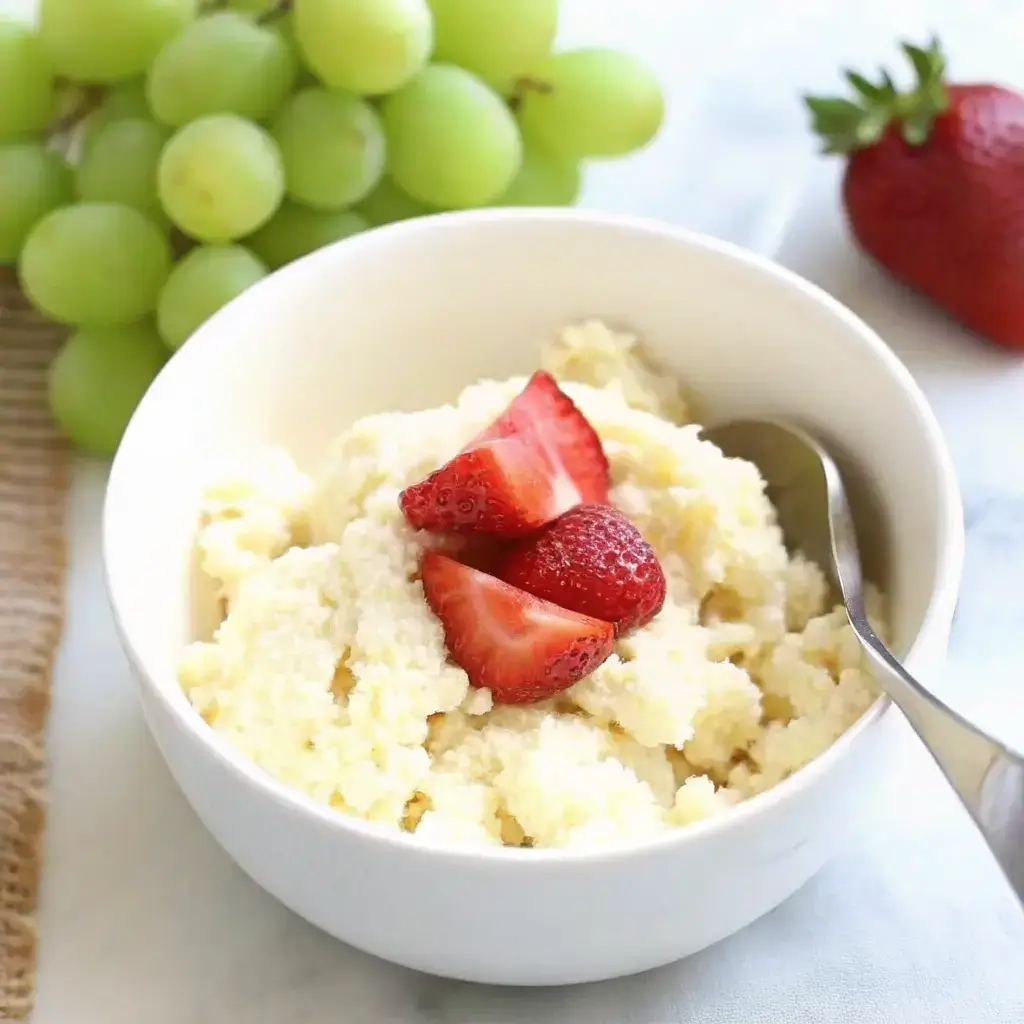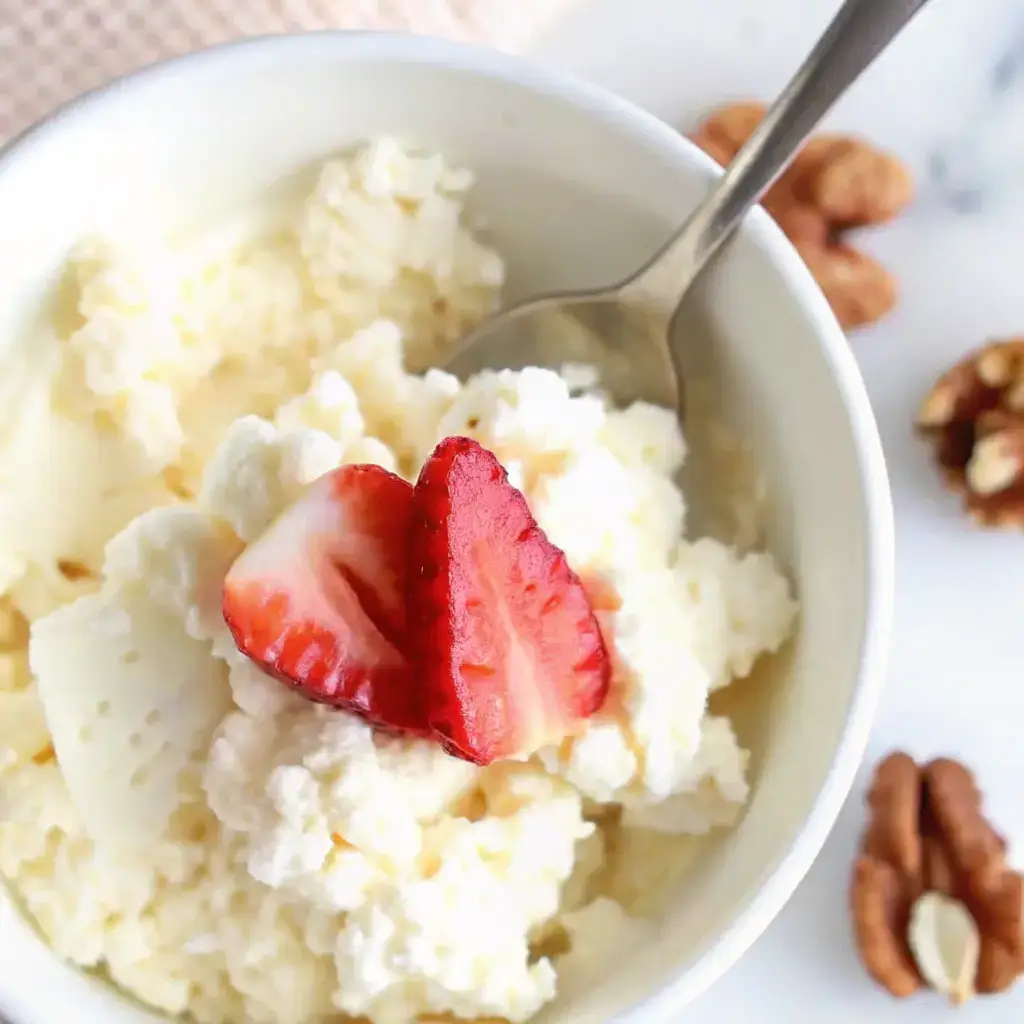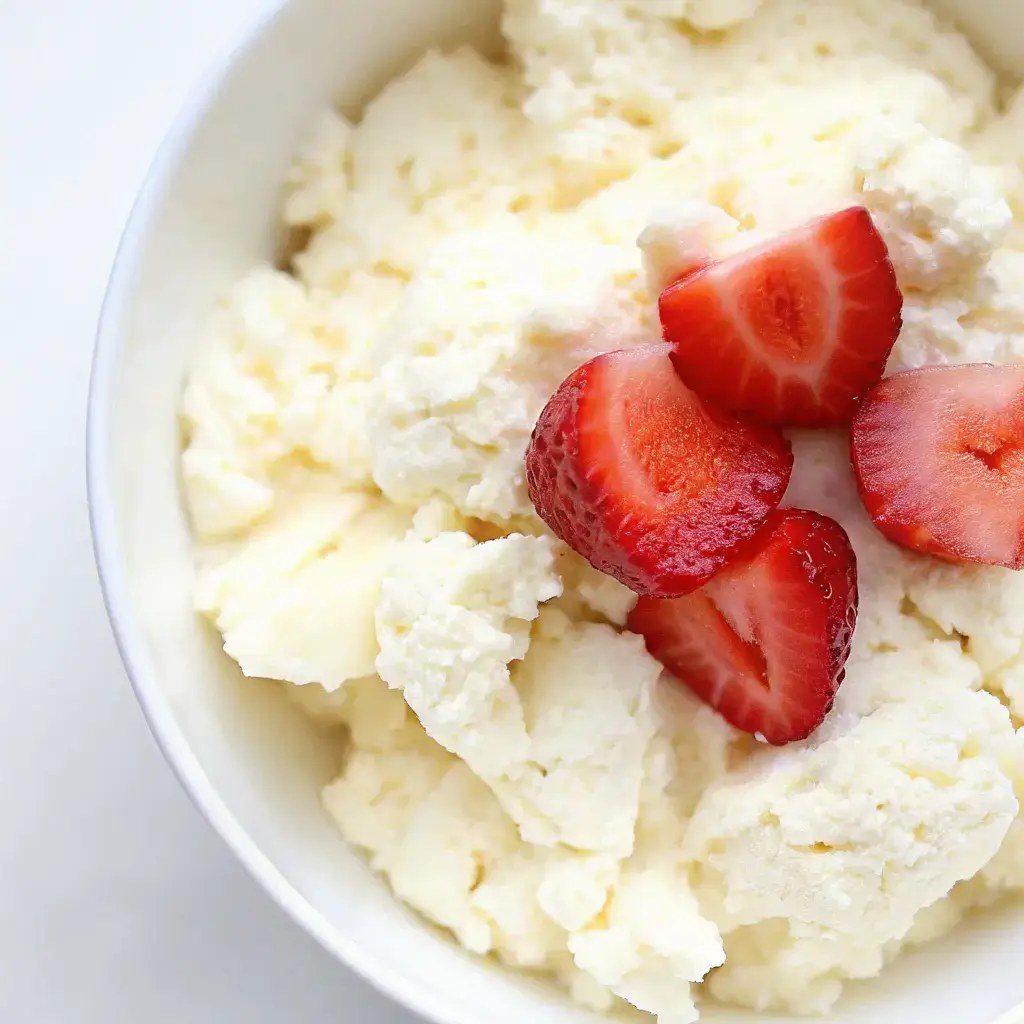Fat free cottage cheese is a popular pick for those watching calories, fat intake, or just looking for a high-protein snack. But is it easy to find, healthy to eat every day, and still tasty? In this guide, I’ll walk you through the best fat free cottage cheese options, why there’s a shortage, how it compares nutritionally, and whether daily consumption is a smart move. We’ll also dive into how to enjoy it in recipes and which brands stand out today. From creamy spoons to protein-packed bites, here’s everything you need to know.
Table of Contents
Table of Contents
For more follow me on Facebook & Pinterest

A Personal Look at Fat Free Cottage Cheese and Why It Belongs in Every Kitchen
Why I keep fat free cottage cheese in my fridge
Growing up, cottage cheese was always in my grandmother’s fridge—cool, tangy, and perfect with sliced tomatoes or a pinch of salt. But it wasn’t until I started seeking healthy, protein-packed meals that I fell for fat free cottage cheese. Now, it’s my go-to snack when I want something nourishing and guilt-free. If you’re trying to compare it with lower-fat options, check out this helpful guide on low fat cottage cheese for side-by-side differences.
From my kitchen to my blog, I’ve found so many ways to enjoy it. Whether I’m blending it into creamy dips or spooning it onto toast with herbs, it’s one of those ingredients that delivers comfort and nutrition all at once.
From childhood bowls to modern-day protein hacks
When I started Easy Dishes To Do, I knew I wanted to include recipes that felt like home while still supporting a healthier lifestyle. Fat free cottage cheese fits that vision perfectly.
It’s amazing how versatile it is—you can eat it sweet or savory, cook it into meals, or keep it simple with fruit and cinnamon. Whether you’re meal prepping or just craving a snack, fat free cottage cheese is a fridge essential.
You’ll even find it in favorites like our egg and cottage cheese bake or for a lighter snack, try the cottage cheese smoothie—both great ways to use it daily. And yes, we’ll answer common questions like “Is it healthy to eat every day?” and “Why is it missing from stores lately?”
So let’s dive into the creamy world of fat free cottage cheese—and find out how to pick the best brands, use it creatively, and make it part of your everyday meals.

Fat Free Cottage Cheese – Your Complete Guide to Healthy, Creamy Choices
Ingredients
Method
- 1. Spoon cottage cheese into a bowl.
- 2. Top with fresh berries and granola.
- 3. Drizzle with honey if desired.
- 4. Serve chilled.
Nutrition
Notes
Tried this recipe?
Let us know how it was!Best Fat Free Cottage Cheese Brands Worth Trying Today
Review of top-ranked brands in 2025
If you’ve ever stood in the dairy aisle wondering which fat free cottage cheese to grab, you’re not alone. Not all options are created equal—some taste watery, while others have a chalky texture. But thanks to recent reviews from trusted sources like Sporked, The Kitchn, and EatingWell, we now have a clearer picture of which brands deliver taste and nutrition.
Among the best rated in 2025 is Good Culture’s Fat Free Cottage Cheese. It offers a thick, creamy texture without added thickeners or preservatives. Another standout is Organic Valley Fat Free Cottage Cheese, praised for its clean ingredient list and mild flavor. These two brands top the list because they balance taste, texture, and real ingredients without unnecessary fillers.
Shoppers also rave about Publix store brand and Daisy’s low-fat option if fat free isn’t available. While technically labeled “low-fat,” many of these still come in at under 1% fat and feel nearly the same in texture and taste. So if your store doesn’t stock fat free, these can be solid backups.
If you can’t find fat free options, low-fat cottage cheese (1–2%) can still work in many dishes like cottage cheese pizza crust or our savory bakes. They offer similar protein content with a slightly creamier taste.
Fat free vs low fat: what you really need to know
The terms “fat free” and “low fat” often get confused, but there’s a nutritional difference. Fat free cottage cheese contains less than 0.5 grams of fat per serving, while low fat typically contains 1% or 2%. The taste can be noticeably creamier in the low-fat version, but many find the fat free option just as enjoyable once you get used to it.
Texture also varies—fat free versions can feel a bit thinner. That’s why some brands add natural stabilizers to maintain thickness. Good Culture, for example, skips gums and fillers, keeping the texture authentic but still firm.
Cooking and baking with fat free or low fat options can give equally delicious results. You’ll find these versions in snacks like cottage cheese egg salad or even layered into healthy bowls. Just be sure to check labels for sodium content—some fat free versions sneak in extra salt to improve flavor.
With rising health trends and clean eating habits, fat free cottage cheese is more than a fad—it’s becoming a smart staple for balanced eating.
Nutrition Breakdown and Daily Eating Guide
Daily intake and potential health concerns
When it comes to healthy eating, fat free cottage cheese offers a strong case. A single half-cup serving typically contains around 80 calories, 14 grams of protein, and zero grams of fat. That’s why many people turn to it as a daily snack or breakfast base—it’s high in protein, low in calories, and fills you up.
But is it safe to eat every day? For most people, the answer is yes—especially if you’re watching your fat or calorie intake. However, it’s important to pay attention to sodium content. Some fat free brands contain as much as 400mg of sodium per serving, which can add up quickly if you eat it several times a day.
Another thing to consider is calcium and probiotics. Fat free versions may be slightly lower in calcium than full-fat options. If bone health is a priority, check that your chosen brand is fortified or naturally high in calcium. A few brands, like Nancy’s Probiotic Cottage Cheese, offer added cultures for gut health—though this is more common in low-fat options.
Pair fat free cottage cheese with fruits or whole grains—or blend it into a quick cottage cheese smoothie to keep things interesting and refreshing.
Protein, calcium, sodium – the real numbers
Here’s a simple comparison of what a typical ½ cup of fat free cottage cheese includes:
| Nutrient | Typical Amount (Fat-Free) |
|---|---|
| Calories | 80–90 kcal |
| Protein | 13–15 grams |
| Fat | 0 grams |
| Sodium | 350–450 mg |
| Calcium | 8–10% DV |
When choosing your brand, it’s smart to balance these numbers with your overall diet. For example, if you’re already consuming salty foods, go for a low-sodium cottage cheese. Or, if you need extra calcium, look for a brand that highlights it on the label.
Need a high-protein, low-sodium idea? This creamy base is featured in recipes like our egg and cottage cheese bake or our creamy, spiced cottage cheese queso for a bold dip without the dairy overload.

Why Fat Free Cottage Cheese Is Sometimes Hard to Find
Market trends and production gaps
If you’ve walked into your local grocery store and noticed an empty spot where fat free cottage cheese should be, you’re not imagining things. While demand for high-protein, low-fat foods has grown, not all manufacturers are keeping up. When your store runs out of fat free cottage cheese, explore high-protein, clean-eating backups like dairy free cottage cheese for plant-based needs or low-fat cottage cheese for creamy bakes.
Fat free cottage cheese isn’t produced in the same volume as full-fat or low-fat versions. Why? Because it requires extra processing to maintain a creamy texture after the fat is removed. Some brands opt to focus more on low-fat styles (like 1% or 2%), which have a broader customer base and better shelf appeal.
Additionally, shelf space is limited. Stores may choose to stock only the top-selling varieties, especially when dealing with perishable dairy items. So even if a brand makes a fat free version, your location might not carry it due to space or local buying habits.
Recent reviews from The Kitchn and Business Insider suggest that Organic Valley and Good Culture still produce fat free options regularly, but even these can be regional. If your favorite isn’t in stock, it’s worth checking online grocery services or natural food chains.
What to buy when shelves are empty
When your go-to brand of fat free cottage cheese is missing, don’t panic—there are a few workarounds that still support your goals.
Low-fat cottage cheese (1–2%) can often be used in the same way with only a small bump in calories or fat. Look for products labeled “light” or “reduced-fat” that have under 2 grams of fat per serving. These still qualify as heart-healthy options and often taste even creamier.
Another tip? Use plain nonfat Greek yogurt as a stand-in. While the texture is smoother, the protein and fat profiles are similar. You can also make a blended low fat cottage cheese dip using low-fat versions and add herbs or lemon juice to balance flavor.
For those committed to fat free only, consider checking the dairy section early in the morning or shopping on restock days. Retailers often refresh perishable inventory during weekday mornings.
Is there any fat free cottage cheese?
Yes, there are several brands that offer fat free cottage cheese, including Good Culture, Organic Valley, and some store brands like Publix or Trader Joe’s. These products typically contain less than 0.5 grams of fat per serving and are widely used in high-protein, low-fat diets. However, availability may vary by region or store.
Why is there a shortage of fat-free cottage cheese?
The shortage of fat free cottage cheese is often due to limited production and low shelf space allocation. Since low-fat versions are more popular with general consumers, manufacturers focus on those first. Fat free options require more processing to maintain texture, making them less common on store shelves.
What is the healthiest cottage cheese to eat?
The healthiest cottage cheese depends on your dietary needs. If you’re watching fat intake, fat free cottage cheese is a good choice. Look for options with low sodium and clean ingredients—Good Culture and Organic Valley are often recommended. For gut health, choose brands with live cultures.
Is it okay to eat fat free cottage cheese every day?
Yes, for most people, it’s safe to eat fat free cottage cheese daily. It’s high in protein, low in calories, and contains calcium and B vitamins. Just monitor sodium levels if you’re eating it often, and consider pairing it with fresh fruits or whole grains for a balanced meal.
Final Thoughts on Fat Free Cottage Cheese
Fat free cottage cheese is more than just a diet food—it’s a reliable, protein-rich ingredient that’s perfect for modern kitchens. Whether you’re watching your fat intake or just looking for a lighter way to enjoy classic dishes, this creamy staple delivers flavor, nutrition, and versatility. Explore other ways to use it in cottage cheese pizza crust for dinner or a refreshing cottage cheese smoothie after a workout.
With the right brand, a little creativity, and some pantry staples, you can enjoy fat free cottage cheese in breakfast bowls, savory meals, or high-protein snacks. And if your store doesn’t carry your favorite, there are excellent alternatives that keep your meals balanced and satisfying.
